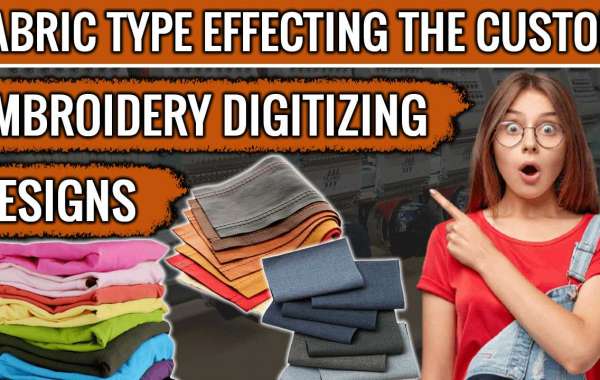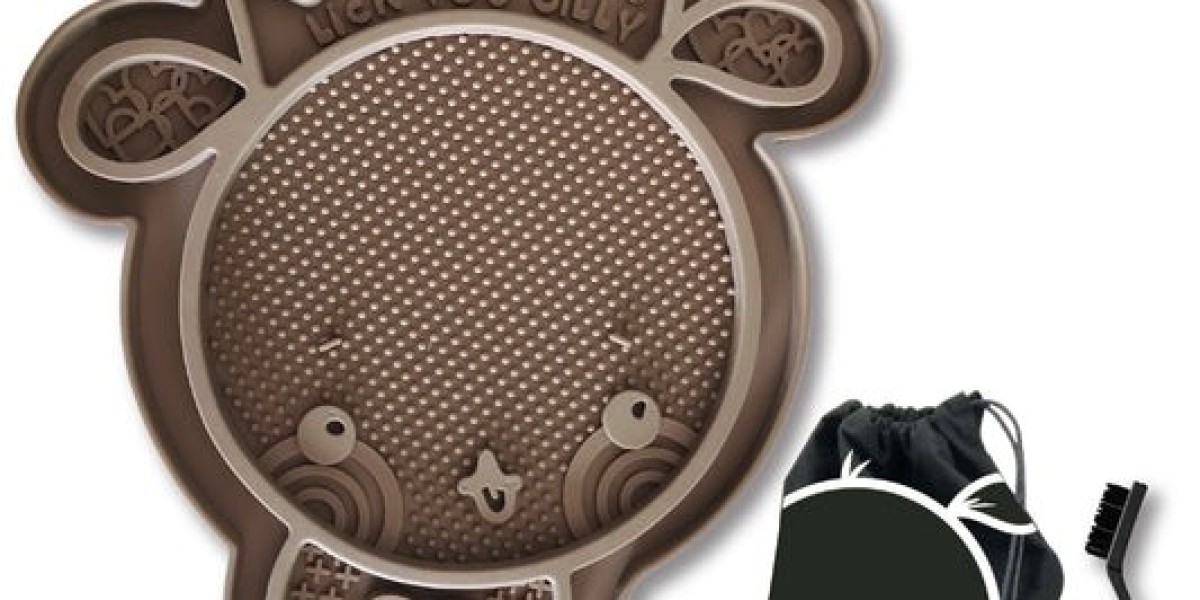Embroidery is a versatile and time-honored art form that has evolved and adapted to the ever-changing world of fashion and design. One of the critical aspects of creating stunning custom embroidery is understanding the role fabric plays in the process. The choice of fabric can significantly influence the outcome of an embroidered design. In this comprehensive guide, we'll explore how fabric type affects custom embroidery digitizing designs and how choosing the right fabric is crucial for achieving the desired result.
The Art of Custom Embroidery
Custom embroidery is the process of creating unique designs, patterns, or artwork by stitching thread onto fabric. It's a versatile and decorative craft that can be found in a wide range of products, from clothing and accessories to home decor and corporate branding. While embroidery can be executed using various techniques, one of the essential considerations is the choice of fabric. Different fabrics have distinct characteristics that impact the way embroidery is digitized and the final appearance of the design.
The Role of Fabric in Custom Embroidery Digitizing
The choice of fabric for custom embroidery digitizing plays a vital role in the design process. Here are some key factors to consider:
Fabric Texture: Different fabrics have varying textures, which can affect how the embroidery design appears. Smooth fabrics like satin provide a sleek and polished finish, while textured fabrics like canvas or denim can add depth and dimension to the design.
Fabric Weight: The thickness and weight of the fabric can influence the density of the embroidery stitches. Light and delicate fabrics may require finer and more delicate stitches, while heavy fabrics can accommodate thicker, bolder designs.
Fabric Color: The color of the fabric can impact the visibility and contrast of the embroidered design. Light-colored fabrics are suitable for vibrant and colorful designs, while dark fabrics may require light or metallic threads for the design to stand out.
Stretch and Flexibility: Some fabrics, especially those with stretch properties like spandex or jersey, may require specialized digitizing to accommodate the fabric's movement without distorting the design.
Fabric Stability: The stability of the fabric is crucial. Some fabrics, like organza or tulle, are delicate and may need additional stabilizers or backing to support the embroidery process and prevent puckering.
Fabric Durability: The durability of the fabric is essential, especially in applications like workwear or uniforms. Durable fabrics like twill or canvas are ideal for designs that need to withstand wear and tear.
Impact on Digitizing and Design
The fabric type influences the digitizing process in several ways:
Density and Stitch Count: Different fabrics require different stitch densities. Light and delicate fabrics may need lower stitch counts to avoid puckering, while heavy fabrics can accommodate denser designs.
Underlay Stitches: The choice of fabric affects the type and number of underlay stitches used to stabilize the design. Softer, stretchy fabrics may require more extensive underlay for stability.
Thread Selection: The fabric's color and texture guide the choice of thread colors and types. Some fabrics may benefit from metallic threads for a touch of elegance, while others may require specialty threads like embroidery floss or polyester.
Embroidery Effects: The fabric type can influence the style of embroidery effects that can be applied. Textured fabrics can create unique effects like 3D embroidery, while smooth fabrics may be suitable for satin stitching or appliqué.
Fabric-Specific Considerations
Let's delve into the impact of fabric on custom embroidery digitizing for specific types of fabrics:
1. Cotton Fabric
Cotton is one of the most versatile and commonly used fabrics for custom embroidery. It offers a smooth and stable surface for stitching. Cotton's natural fibers readily accept embroidery, making it an ideal choice for various designs. The digitizing process for cotton fabrics often involves moderate to high stitch densities to create vibrant, detailed designs.
2. Linen Fabric
Linen is another natural fabric that is known for its durability and texture. It offers a unique, rustic appearance that complements certain embroidery styles. Custom embroidery on linen often involves digitizing with slightly lower stitch densities to maintain the fabric's texture and breathability.
3. Silk Fabric
Silk is a luxurious and delicate fabric used for high-end fashion and special occasions. Silk's sheen and smoothness make it an excellent choice for intricate embroidery. When digitizing for silk, designs may require finer stitches and reduced density to maintain the fabric's elegance.
4. Denim Fabric
Denim is a sturdy and rugged fabric known for its versatility. Embroidery on denim often involves digitizing with moderate to high stitch densities to ensure the design remains bold and well-defined. The fabric's texture can add dimension to the embroidery.
5. Spandex or Stretch Fabric
Spandex and other stretch fabrics are commonly used in activewear and sportswear. Digitizing for stretch fabrics involves adding additional underlay stitches to stabilize the design and accommodate the fabric's flexibility. Stretchy fabrics may also require using specialty threads designed to move with the fabric.
6. Fleece Fabric
Fleece is a cozy and warm fabric used in winter apparel. Digitizing for fleece involves creating designs with adequate spacing and slightly lower density to prevent the design from sinking into the fabric's plush surface.
7. Sheer Fabric (Organza, Tulle)
Sheer fabrics like organza and tulle are often used in formal and bridal wear. Digitizing for sheer fabrics may require using delicate stitches and minimal underlay to maintain transparency while providing stability.
Custom Embroidery Tips for Different Fabrics
Regardless of the fabric type, here are some general tips to ensure successful custom embroidery digitizing:
Stabilization: Choose the appropriate stabilizer or backing for the fabric. Lightweight and delicate fabrics may require a tear-away stabilizer, while heavy fabrics benefit from cut-away stabilizers.
Test Stitch: Always run a test stitch on a sample of the fabric to evaluate the design's appearance and stability. Adjustments can be made if necessary.
Thread Selection: Choose high-quality embroidery threads suitable for the fabric. Consider factors like thread weight, color, and texture.
Machine Settings: Adjust your embroidery machine's settings, including stitch density, speed, and tension, based on the fabric being used.
Secure Hooping: Properly hoop the fabric to ensure stability and prevent distortion during the embroidery process.
Backing Removal: After embroidery is complete, remove the backing or stabilizer carefully to avoid damaging the fabric.
Conclusion
Custom embroidery digitizing is a dynamic and creative process that involves careful consideration of fabric type. The fabric you choose can have a significant impact on the design's appearance, durability, and overall effectiveness. Whether you're creating embroidered clothing, accessories, or home decor, understanding the nuances of different fabrics and their interactions with digitized designs is key to achieving the desired result.
So, the next time you embark on a custom embroidery project, take a moment to consider the fabric you're working with. Embrace the challenges and opportunities it presents, and let it inspire you to create embroidery designs that are as unique and beautiful as the fabrics themselves.
Zdigitizing
We trust this article might really work out for you. To digitize embroiery plan you would require an expert like ZDigitizing, as digitizing is a mind boggling process.
Zdigitizing is a digitizing embroidery organization that gives total digitizing and vector craftsmanship benefits all around the world to organizations, ventures, and enterprises. Zdigitizing gives fashionable, strong, and sensible custom digitizing embroidery and vector craftsmanship administrations. We have been conveying first class digitizing embroidery administrations for 20+ years.










